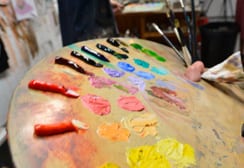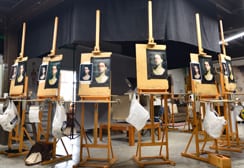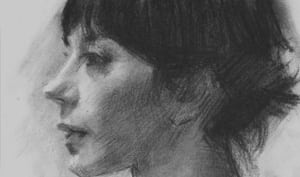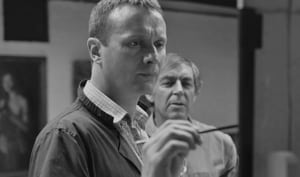Step 13: Painting the Chin – Portrait of Lisa
Painting the chin. The chin is a key structural element of the lower face, defining the termination of the jawline and helping to anchor the mouth and neck. In this step, you’ll refine the front and side planes of the chin, focusing on form, anatomy, and light behaviour to ensure it feels solid and integrated.
- Simplify into Front and Side Planes
• Front Plane – Faces forward and typically catches the most light, especially when the light source is overhead or frontal.
• Side Planes – Turn away from the light and transition into the shadow side of the jaw. These should be darker and softer.
• Bottom Plane – Faces downward toward the neck, often in deep shadow, but can pick up reflected light from the shirt or chest. - Anatomical Structure of the Chin
• The chin itself is a rounded mass, but can be simplified into a box-like form with soft transitions between planes.
• The mental protuberance (bony point of the chin) gives it structure and may appear more prominent in some individuals.
• The mental labial sulcus (the groove beneath the lower lip) helps separate the chin from the lip and often contains a softer shadow or a reflective light band. - Modelling the Form
• Start with the overall tone of the front plane, then subtly darken the sides as they roll away.
• Observe how the chin transitions into the jawline—it should feel like a continuation, not a separate element.
• If the chin protrudes, the front plane may catch more direct light; if it recedes, it will be softer and less defined.
• Keep the transitions soft but directional, maintaining clarity of form without over blending. - Edges, Colour, and Integration
• Avoid harsh outlines between the chin and surrounding forms—use value shifts and edge control instead.
• Adjust colour temperature as needed: the chin can reflect warmth from the lips above, or cool tones from the neck and environment below.
• Integrate the chin smoothly into both the jaw and lower lip, using the planes as guides to maintain believable structure.
By paying attention to the planes, form, and subtle transitions of the chin, you ensure that the lower face is structurally sound and visually harmonious—supporting the rest of the portrait without drawing unnecessary attention.






